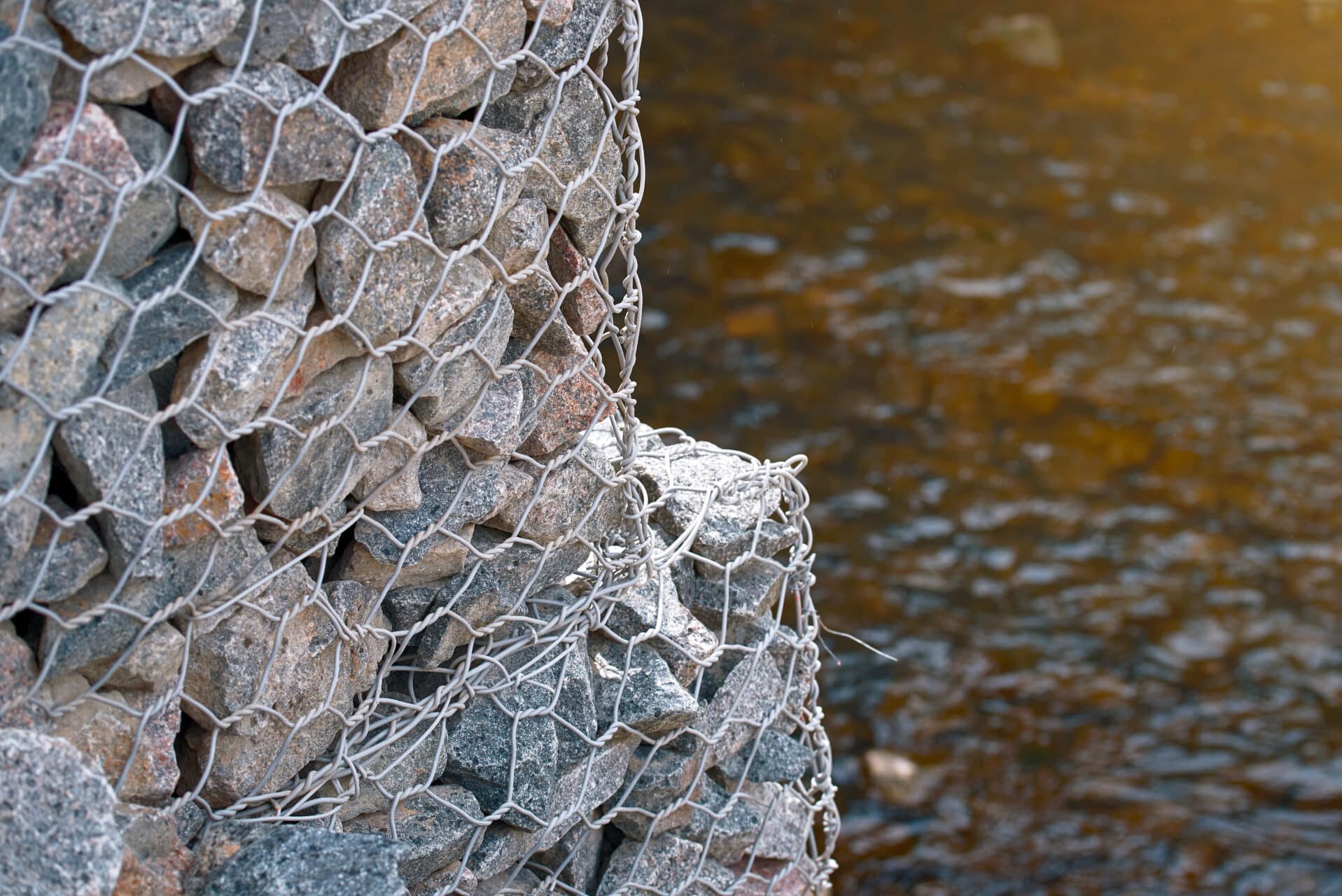Are you planning for your next waterfront project? Accounting for erosion and sediment control for waterfront developments at the start can save you money and ensure your structures are on a solid foundation if done correctly. One misstep can lead to compromised structures and heavy fines, but working with a professional contractor will help you pass regulations with a stunning result. This blog explores shoreline erosion and sediment control measures you can quickly implement in your next waterfront project.
What are the Top 5 Ways to Stabilize a Shoreline with Erosion and Sediment Control?
- Replanting Native Vegetation: Planting native plants along shorelines stabilizes soil and reduces erosion by anchoring the soil with woody and aquatic vegetation. Check out our post on the best plants and grasses for erosion and sediment control for recommendations to get you started!
- Gabion Cages: Wire mesh baskets filled with rocks, concrete, and soil provide durable shoreline stabilization by conforming to ground movement and trapping sediment.
- Silt Fencing: Geotextile fabric supported by posts and trenched into the ground promotes the settling of suspended sediment, preventing erosion and maintaining water quality.
- Rip Rap Rocks: Large rocks stacked on slopes absorb wave energy and prevent soil erosion, making them ideal for reinforcing shorelines and preventing sediment displacement.
- Strategic Landscaping and Water Runoff Diversion: Minimizing paved surfaces, retaining moisture-absorbing vegetation, and directing rain gutter outlets away from shorelines reduce soil displacement and maintain shoreline stability.
- Wattling: Weaving flexible materials like branches or twigs into fences or barriers stabilizes soil and prevents erosion. Wattling is a cost-effective and environmentally friendly method that promotes immediate stabilization and encourages vegetation growth.
- Erosion Control Blankets: These blankets, made of biodegradable materials like coconut fibre or synthetic materials, provide temporary protection to soil surfaces, promoting vegetation growth and preventing erosion along shorelines and drainage ditches.

What’s the Difference between Rip Rap and Gabion Cages?
A gabion cage, or rock cage, is made up of wire mesh made out of galvanized steel containing concrete, rocks, and sand or soil, while a rip rap is made up of loose rock piles, meaning that it can be a matter of preference for loose or secure. Considered one of the most versatile erosion and sediment control measures, you can customize a gabion cage to conform to the ground and slope, incorporating angles or straight sections to maximize the water flow. The secure nature of a gabion makes it the top choice for stacking along steep river banks or channel linings. They assist with preventing erosion through trapping and slowing the flow of water and sediment into waterways during the spring thaw and heavy downpours.
Gabion rock cages can be expensive to install due to their regular maintenance. Still, they are a top choice for culverts, retaining walls and bridge abutments due to their durability and customizable nature. Interested in learning more about gabion cages for your next project? MIDA Contracting can help! Request a quote today to learn more about our erosion and sediment control services.
Tips for Planning Waterfront Erosion and Sediment Control for Developers
Choose Quality Erosion Control Materials
Select erosion control materials specifically designed for waterfront applications, such as erosion control blankets resistant to water erosion and biodegradable coir logs for shoreline stabilization. Prioritize quality and durability to withstand waterfront conditions.
Integrate Natural Features
Incorporate natural features like marshes, dunes, and mangroves into erosion control designs to provide additional protection and enhance biodiversity. These natural buffers can absorb wave energy and reduce shoreline erosion.
Engage Stakeholders and Communities
Collaborate with local communities, environmental organizations, and regulatory agencies to develop erosion control strategies that align with community values and environmental objectives. Foster partnerships and solicit input to ensure effective implementation and support.
Monitor Waterfront Health
Establish a monitoring program to assess waterfront ecosystems’ health and stability regularly. Monitor erosion rates, vegetation growth, and water quality indicators to identify potential issues and inform adaptive management strategies.
Invest in Professional Expertise
Seek the expertise of professionals with experience in waterfront erosion control and ecological restoration. Consult with coastal engineers, environmental scientists, and landscape architects to develop customized solutions tailored to your waterfront site.
How can we help today?
Are you looking for erosion and sediment control services for the Edmonton area? We’ve got you covered! When it comes to delivering for your customers and keeping up with project timelines, we can help with everything you need for construction maintenance services. From vegetation recommendations to offering the highest quality products, our team is here to support your next development from initial planning to installation and monitoring. Request a quote today to get started with MIDA Contracting!

